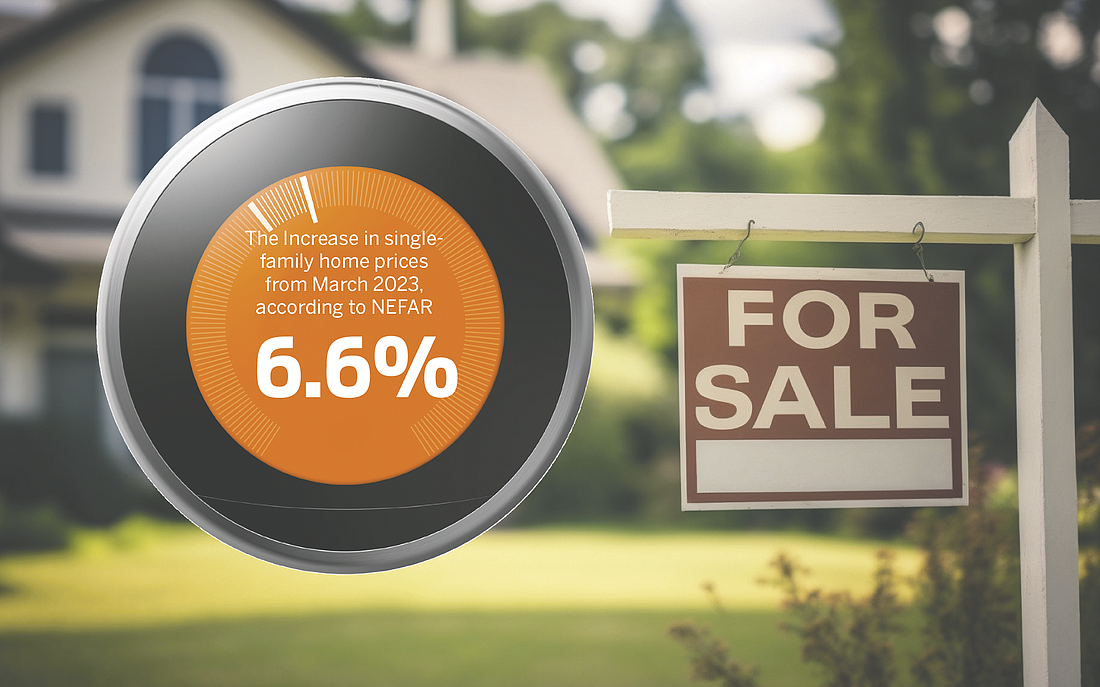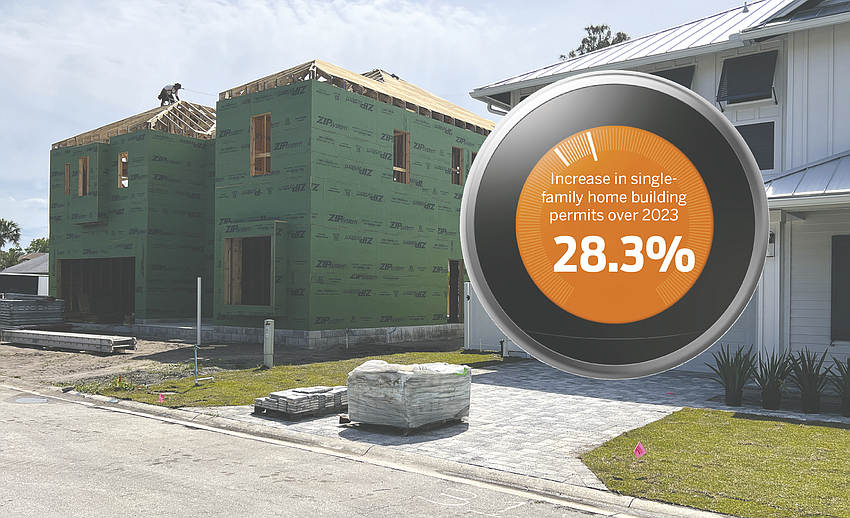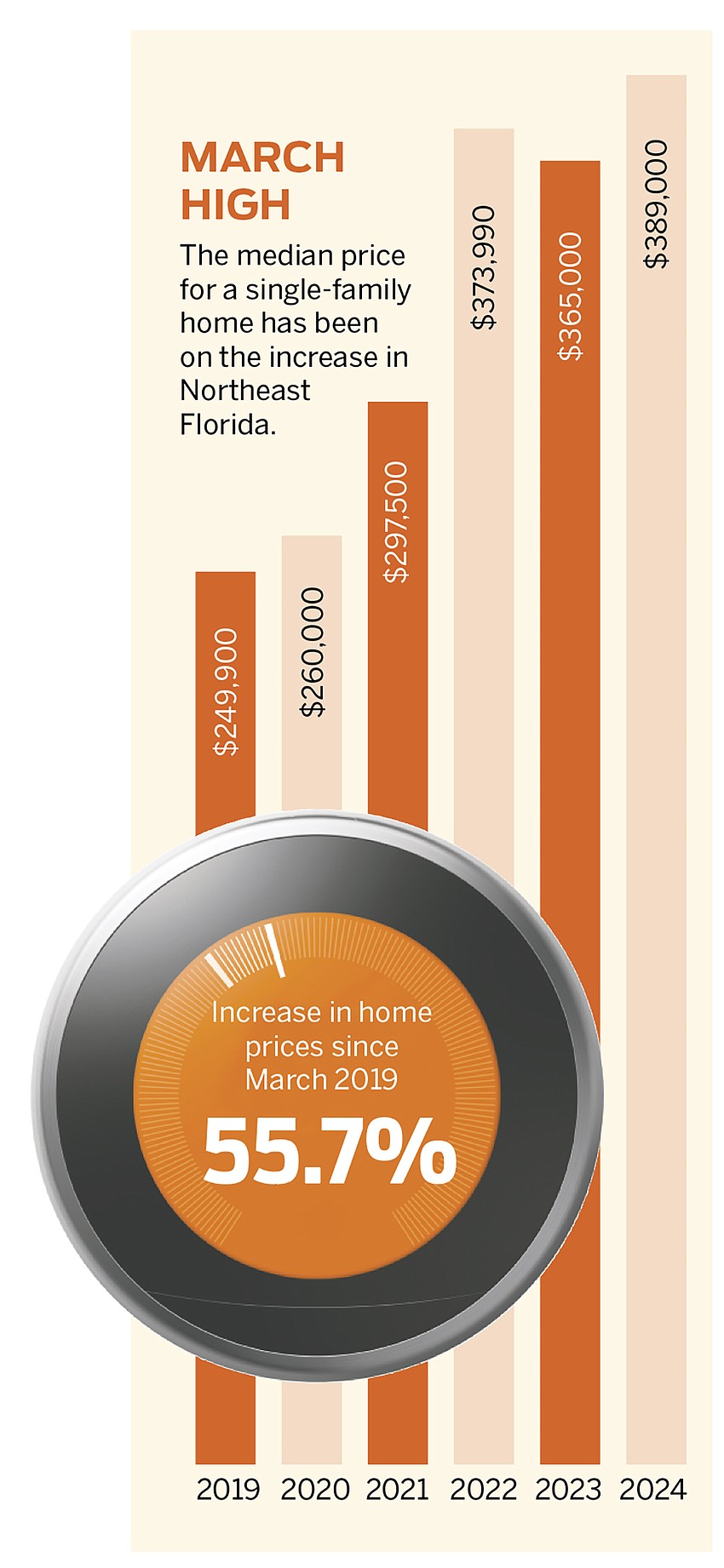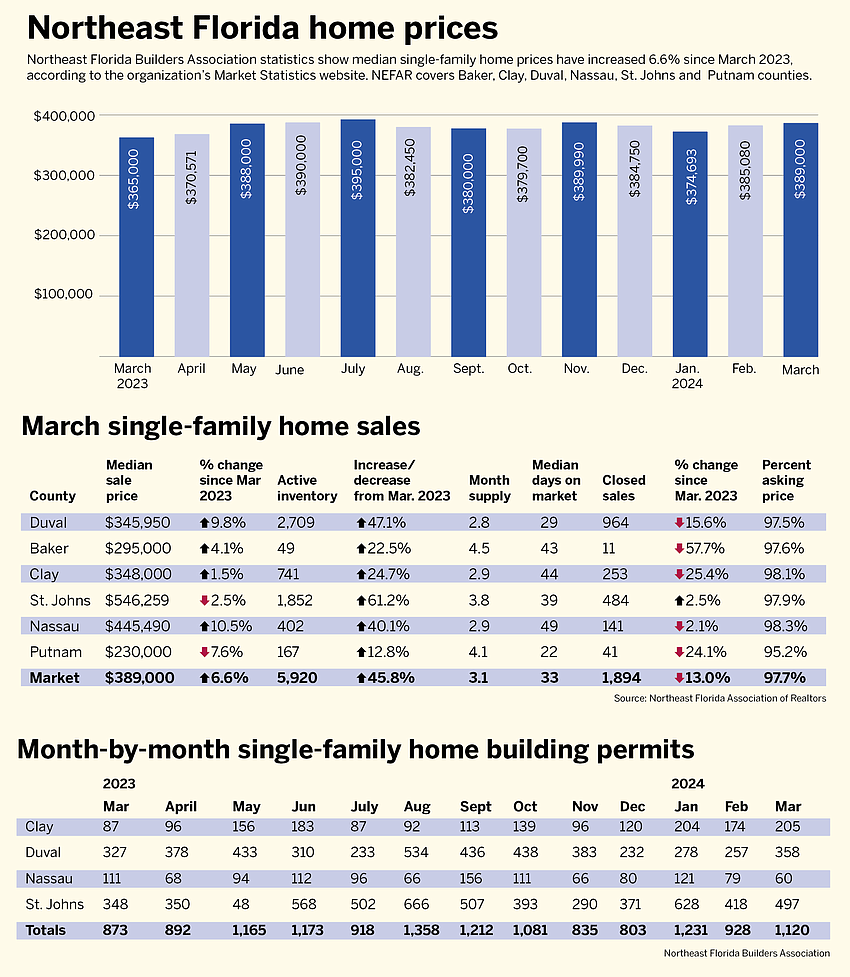
Residential home sales data for the first quarter show optimism for both buyers and sellers.
• Home prices are up.
• Inventory is up.
• Days on the market are up, providing more choice for buyers.
• Building permits are ahead of this time last year.
• Buyers are accepting that the days of 3% and 4% fixed-rate 30-year mortgages are over and aren’t returning.
• New home construction is bolstered by builders offering to buy down interest rates.
These are the factors that lead to optimism by leaders of the Northeast Florida Builders Association and the Northeast Florida Association of Realtors.

“January started out a little slow. But it picked up in February and greatly picked up in March. Indicators are that it will turn out to be a good April as well,” said Rory Dubin, 2024 NEFAR president.
The first quarter of 2024 versus the first quarter of 2023 showed a 28.3% increase in permitting over last year’s first quarter.
“I’ve heard several builders telling me they felt we are finally returning to a more normalized building cycle like where it was in 2019,” said Jessie Spradley, NEFBA executive officer.
A NEFBA survey of builders found industry confidence at 51%, up from 31% in December 2022.
There is still a housing shortage from the lasting effects of the 2008 recession and the unstable markets and supply chain interruptions during the 2020 coronavirus pandemic.
Still doable
Jacksonville, compared with the rest of the state and even the Southeast region, is still one of the most affordable large metro housing markets, Dubin said.
He cites the steady increase in closings, pending sales and increased inventory as signs of a strong market.

Even with interest rates in the high 6% to low 7% range, homes priced from $350,000 to $450,000 are still doable for first-time buyers, Dubin said.
“They will be better off purchasing a home rather than renting, as long as their credit allows them to do that, because their payments can be the same or less than a rental,” he said.
The year started with 4.5 months of inventory in January, 3.7 months in February and 3.1 months in March.
While on the decline, it is not like the lack of inventory in 2021 when it was common to see less than one month of inventory in the six-county market of Duval, Baker, Clay, Nassau, Putnam and St. Johns counties, according to NEFAR real estate data.
At that time, a listing may have lasted two weeks before there was a contract on a property, the data showed.
Ideally, a housing supply of four to six months typically achieves an equilibrium between buyers and sellers in the market.
Much over that, it becomes a buyer’s market, Dubin said.
In today’s market, buyers may save money by buying new construction.
“More and more people are finding a better opportunity to buy directly from the builder because (builders) are buying down rates so that they are actually lower than somebody trying to sell a resale,” Dubin said.

Spradley said new construction buyers are taking on the passed-along costs of county fees.
The impact fees can add $20,000 to the price of a new home, he said.
Interest rates
Interest rates and inflation are still on the minds of buyers. Economic forecasters predicted at the beginning of the year that rates would be cut steadily in 2024.
They are now hedging those bets, said Brad Bailey, owner and president of Elite Lending Service in Jacksonville.
Rates for a fixed-rate 30-year mortgage have recently been in the low 7% range, he said.
“We saw some improvement but not quite enough to get us below 7%. But at least it is moving in our favor,” Bailey said.
The days of the 3%-4% rates were an anomaly that won’t likely be repeated, Bailey said.
The federal government bought bonds to create artificially low rates. The pandemic also contributed to lower rates for a time.

“The great part about low interest rates is that they really increased the buying power for lower-income and lower-middle-income families,” he said.
“There is a big difference in buying a house at 3.5% and 7.5%. It can be very limiting on what you can afford.”
Home affordability
On the downside, the Home Affordability Index is declining. This means fewer buyers can afford to buy.
The NEFAR data showed that as of March, the index was 66.5. Ideally, that number should be 100 or above.
NEFAR describes the index as the “measurement of whether a typical family earns enough to qualify for a mortgage on a typical home, based on current interest rates, median income and median home prices. A higher number means greater affordability.
“This index measures affordability factors for all homebuyers making a 20% down payment. An index of 100 is defined as the point where a median-income family has the exact amount of income needed to purchase a median-priced existing home. An index value over 100 means that the family has more than enough income, while a value below 100 means that a family doesn’t have enough income to qualify for a mortgage loan,” the NEFAR report said.
Also, Spradley said some of those who would like to sell or buy feel trapped by the good fortune of having purchased when rates were low.
No matter their current needs or desires, giving up a 3% or 4% loan is hard to justify.
“It’s a frozen market,” Spradley said.
“Folks who traditionally would be ready to take that leap into their ‘move up home’ and out of their ‘starter home,’ are locked in at that mortgage rate. They are staying in their starter home. So that means that first-time buyers are having a hard time finding that entry-level home.”
